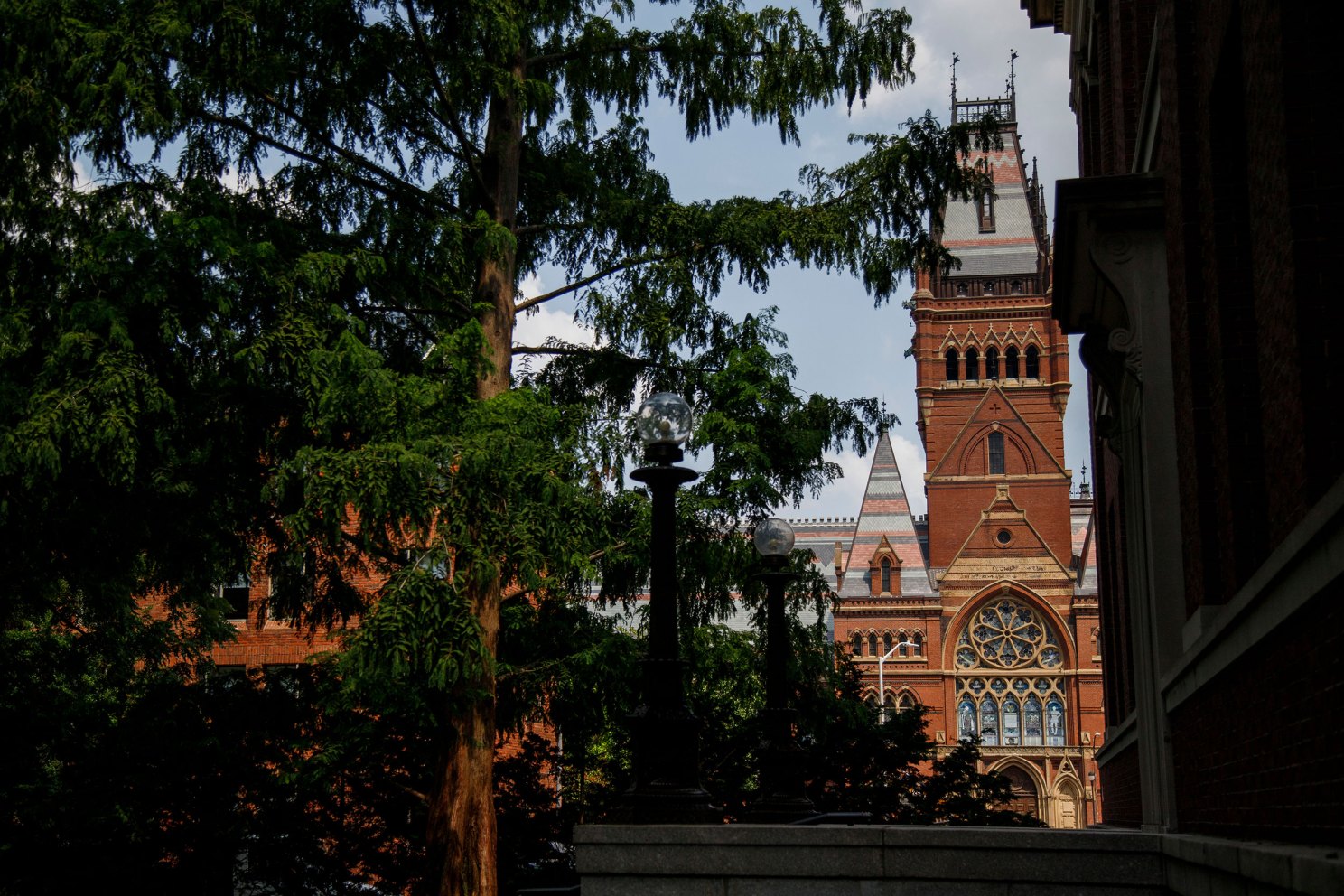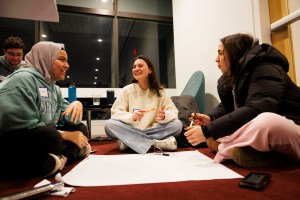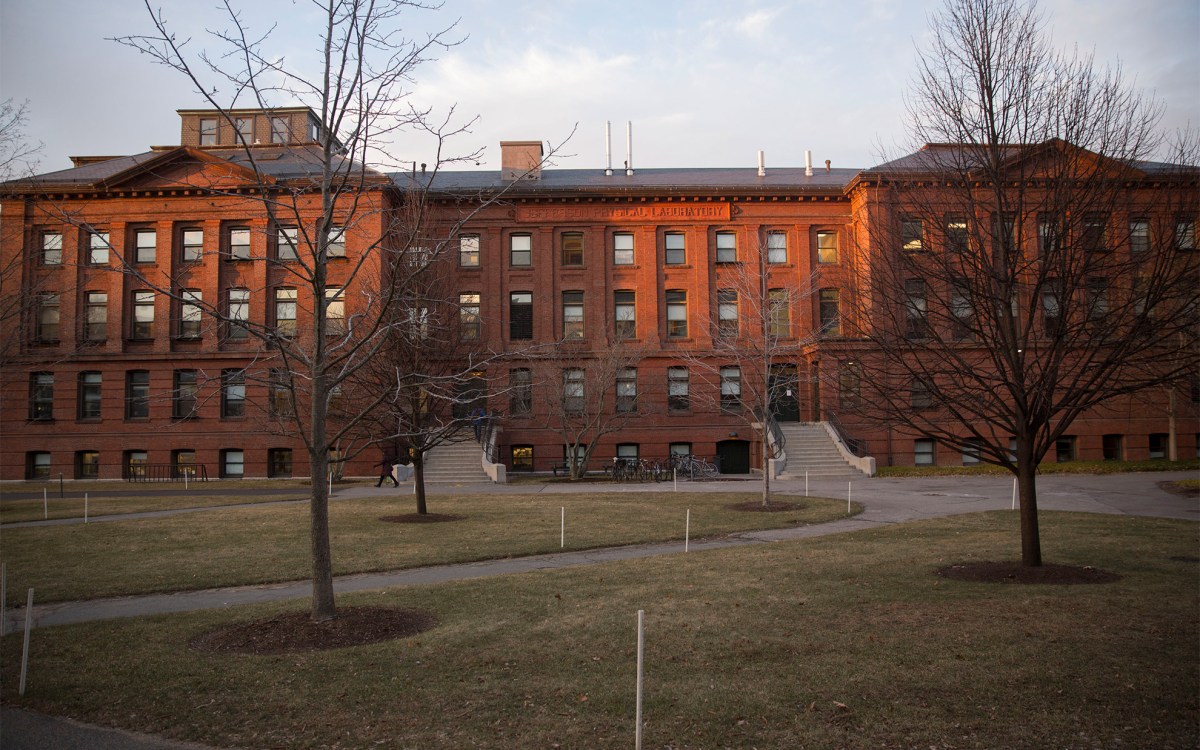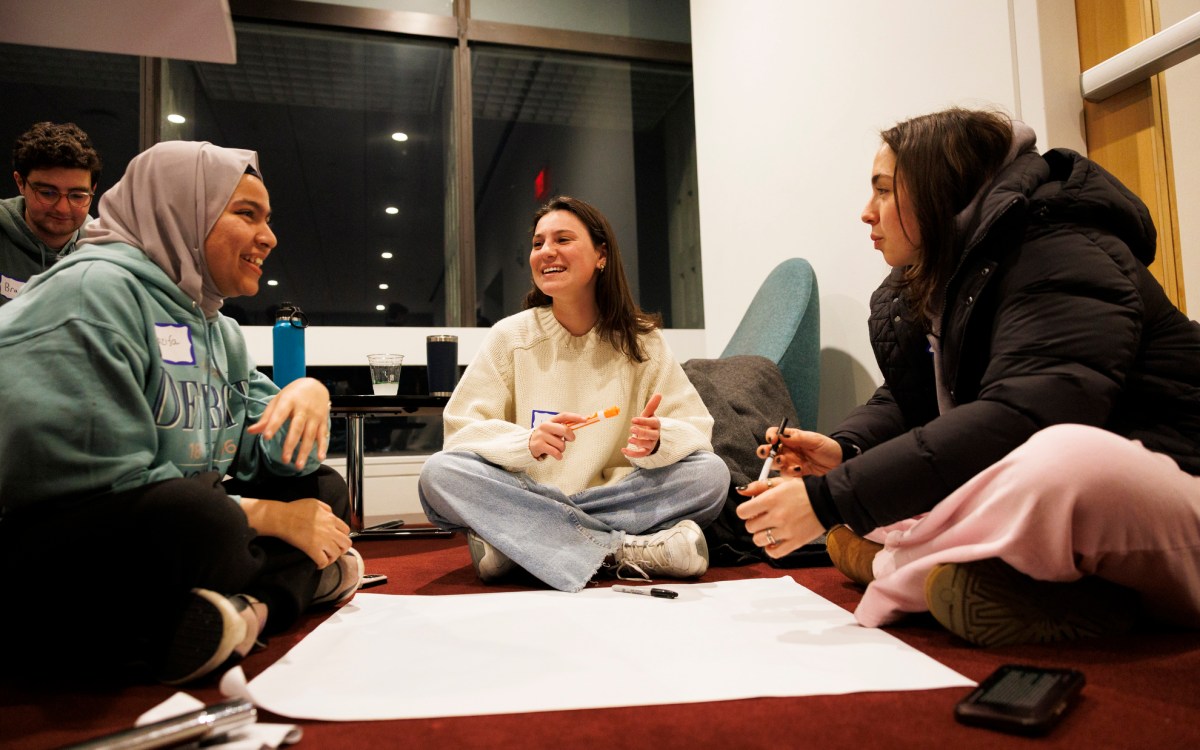
Memorial Hall.
Photo by Grace DuVal
At a meeting of the Faculty of Arts and Sciences on Oct. 1, 2024, the following tribute to the life and service of the late Daniel Albright was spread upon the permanent records of the Faculty.
Daniel Albright, the Ernest Bernbaum Professor of Literature at Harvard from 2003 until his untimely death at the age of 69, was a prolific and ingenious analyst of literary modernism, lyric poetry, the challenging early 20th-century intersections of music, science, literature, and art, and the larger theory of aestheticism across the arts. His 16 books, along with his amusing and wide-ranging lecture courses on modernism at Harvard and his always warm and lively conversational manner, defined a place where learning, whimsy, a photographic memory, amusing side glances, a drawling eloquence, mischievous formulations, exact timing, and theatrical pauses delighted his listeners and readers while offering a precise and detailed analytic account of those moments of aesthetic experience that define our personal and exhilarating encounters with works of art.
Born in Chicago, Illinois, on Oct. 29, 1945, Albright attended Rice University, where he majored in mathematics until he switched abruptly to English literature. At Yale University, he completed his Ph.D. in three years with a thesis on the poetry of William Butler Yeats. His first book, “The Myth Against Myth: A Study of Yeats’s Imagination in Old Age,” was published at once by Oxford University Press. After Yale, Albright taught for 17 years at the University of Virginia, where he was promoted to full professor and published five books on lyric theory, Yeats, Tennyson, and the modernism of Thomas Mann, Beckett, Nabokov, Schoenberg, and Woolf. While at Virginia, Albright married Karin Larson, with whom he had a son, Christopher.
In the middle third of his academic career, Albright taught for 16 years at the University of Rochester with an affiliate appointment in musicology at the Eastman School of Music. While at Rochester, his many publications on music and the relations between early 20th-century modernism in music and literature began his search for a wider aesthetics of modernism across the arts.
Once at Harvard, the final third of Albright’s career unfolded. In his later books, he developed a theory that he called panaesthetics, a challenge to the notion that each art has not only a specific medium but also unique limits and central preoccupations. Albright’s popular General Education course, Putting Modernism Together, reflected the expanding vision of this phase of his career.
In Albright’s many books, lectures, and articles, he developed a broad interdisciplinary account of modernism, while setting that interest within his account of a lyric tradition that includes Yeats, Tennyson, and the larger theory of lyric poetry. He situated literary modernism within early 20th-century music and science, above all within music because both its lyricism and its experiments with form provided strong analogues with literary modernism.
As a literary and musical interpreter, Albright is characterized by a demonic attentiveness, by learning, by a fanciful mind, and by brilliant writing. Drawn to the artistic extremity of Schoenberg, Beckett, and Nabokov or the collaborative work of Gertrude Stein, Albright took modernism to require, in part, difficulty, and he saw that it involved elaborate and playful engagement with language. His was an empirical, speculative, text-based criticism.
Albright’s first book on Yeats’s imagination in old age could not, with all its attention to the language of poetry and myth, have predicted his second, two-part project on modernism: “Personality and Impersonality: Lawrence, Woolf, Mann” and “Representation and the Imagination: Beckett, Kafka, Nabokov, and Schoenberg.” Each of these books set out to isolate a core feature of representation within modernity. In “Representation,” Albright, in his always paradoxical way, worked out the costs of creating an extreme fictive world, an abstract world established by means of the details of the real, a collapsing project always pushed too far in order to work at all. The earlier book on expression and personality started from the opposite direction, studying fictive worlds that express the writer’s personality and biography by means of the central figure of the artist. Here too Albright worked in the direction of paradox since each of these three careers required a swerve into the abstract, the allegorical, and the impersonal after a certain exhaustion of the artistic resources of personality.
Albright’s work in the second half of his career moved this ambition to a larger terrain. Literary modernism itself is now configured and expressed through the competing and companionable modernisms of art, music, and science. These ambitions define Albright’s two major mid-career books “Quantum Poetics: Yeats, Pound, Eliot, and the Science of Modernism” and “Untwisting the Serpent,” his first attempts at large-scale aesthetics of modernism across the arts. Albright resisted Lessing’s strong argument for the separation of powers within the different domains of art in order to isolate, for our attention, small-scale shared aesthetic features common in the 20th century to music, drama, poetry, and opera. Gestus, or gesture, is one of those small aesthetic units. Opera — with its ambition to unify all of the arts within a performance where words, music, gesture, presence, story, and the visual effects of costume and spectacle are all drawn together — is certainly at the heart of Albright’s idea of the dream of modernism.
From Albright’s earliest work on Yeats to his all-embracing final work on panaesthetics, his career was that of a pathbreaker who moved on to ever newer enlargements of the domain within which we pose our questions about the central works and artists of modernism and its aftermath.
Albright was named a National Endowment for the Humanities fellow in 1973, a Guggenheim Fellow in 1976, and a Nina Maria Gorrissen Fellow at the American Academy in Berlin in 2012. He died suddenly on Jan. 3, 2015, in Cambridge, Massachusetts. He is survived by his domestic partner, Marta S. Rivera Monclova; his son, Christopher Albright; and his ex-wife, Karin.
Albright will be remembered for a style that is that of an aesthete: savoring words, ideas, juxtapositions, and the discoveries of his own brilliant mind and polymath learning. Uniqueness, a rich, high style, a challenging comedy of intellect in the manner of Nabokov, a seriousness about beauty and invention — these are the traits that defined Albright’s intellectual performance.
Respectfully submitted,
John T. Hamilton
Christopher Hasty
Elaine Scarry
Philip Fisher, Chair




